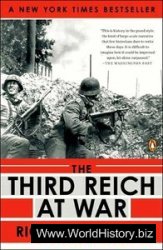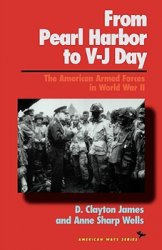In 1626 the Dutch West India Company’s director, Peter Minuit, “purchased” Manhattan from local Indians in exchange for 60 guilders worth of European goods. He named the new settlement New Amsterdam. In the first year New Amsterdam was a small settlement on the southern tip of Manhattan with 270 inhabitants, 30 houses, a mill, and a countinghouse.
Ten years later New Amsterdam had hardly expanded in size or population, but its inhabitants had become remarkably diverse. The mayor claimed that 18 different languages were spoken in the city. Most of the inhabitants were men working for the Dutch West India Company, which had financed the settlement and owned most of the property.
In 1626 the company bought 11 male slaves and three more in 1628. Initially, slaves had many of the same legal, military, and religious privileges as whites, although miscegenation was later forbidden. In 1644, when some of the first slaves petitioned for their freedom, the company granted them “half-freedom,” an arrangement by which slaves received their liberty and some land but were forced to work for the company, for wages, whenever necessary.
Although New Amsterdam had begun as a rough trading post—fully one-fourth of the buildings in 1638 were taverns—by the middle of the 17th century it had developed into a bustling seaport. By 1660 the population had increased to 1,500, including many more families. The inhabitants were still a heterogeneous mix of Europeans and Africans. In 1664 the 300 slaves in New Amsterdam constituted 20 percent of the city’s population. That same year James, the duke of York, sent a war fleet to New Amsterdam. The locals surrendered without resistance. The Dutch recaptured the city in 1673 and named it New Orange, but when it was ceded back to England 15 months later, it permanently gained the name New York City.
In the decades after the British reconquest of New York, the city became increasingly Anglicized and connected to the British Empire. Trade increased to England and the West Indies, and English merchants owned an ever larger percentage of the city’s wealth. During the wars against France and Spain, New York sent out more privateers to harass foreign shipping than any other port in North America. In the early part of the century, pirates, including Captain Kidd, received economic and social support from the governor. Sailors, soldiers, and other transients contributed to the fluidity of New York’s culture.
Despite the decline of Dutch culture, which had encouraged women’s economic activity, women remained practicing traders in the Atlantic world. Coverture and the exclusion of women from economic life were not characteristic of British New York City. Numerous female merchants and shopkeepers contributed to the city’s role as an entrepot for the British Empire.
The city retained the ethnic diversity that had characterized it in the Dutch era. As late as 1750 the English still did not represent a majority of the people. At midcentury the city was roughly 45 percent English, 21 percent German and Dutch, 15 percent Scots, Scots-Irish, and Irish, and 14 percent African American and African. New York City had the largest urban black population north of Maryland.
The British established a more rigorous slave code than had the Dutch, but it was nearly impossible to enforce.
Slaves socialized with whites and each other in taverns and on the streets. In 1712 roughly 25 newly imported African slaves revolted, burning buildings and killing nine whites. In 1741 authorities suspected another plot, though on little evidence. More than 30 people, including four whites, were executed in the Negro Plot of 1741, and another 70 were banished from the colony.
See also cities and urban life.
Further reading: Edwin G. Burrows and Mike Wallace, Gotham: A History of New York City to 1898 (New York: Oxford University Press, 1999); Michael Kammen, Colonial New York: A History (New York: Oxford University Press, 1975).
—Serena Zabin
Nicolet, Jean (1598-1642) explorer of the Great Lakes region
Jean Nicolet explored westward from the Atlantic Ocean, extending New France to the Mississippi River. Born in France, Nicolet came to the New World in the late 1620s and learned the Algonquin and Huron-Iroquois languages. In the belief that China lay just beyond the Sault, the passage between Lake Huron and Lake Superior, the French decided to explore the region. With his knowledge of Native American languages, Nicolet was the best choice. The explorer and his party traveled to Georgian Bay in 1634 and then, accompanied by seven Huron, retraced Etienne Brule’s line to the Sault. He turned southward at this point, found the Strait of Mackinac, and discovered Lake Michigan for France. On the far shore of the lake, Nicolet entered Green Bay and, having donned a Chinese silk robe for the occasion, met, much to his surprise, the Winnebago instead of the Chinese. The Winnebago informed Nicolet that the “Big Water” was three days’ journey away. The Native Americans were referring to the Mississippi, but the Frenchman believed that he had reached the Pacific Ocean, and he returned home. His discoveries were not followed up because of the hostility of the Iroquois and a lack of interest among the French. Nicolet spent the remainder of his life at Three Rivers, working as a commissary and interpreter. In 1637 Nicolet married Marguerite Couillard in Quebec, and the couple subsequently produced one child, a daughter. In October 1642 Nicolet was returning to Three Rivers when his boat sank in rough seas on the St. Lawrence River, and the explorer, who had never learned to swim, drowned.
Further reading: C. W. Butterfield, History of the Discovery of the Northwest by John Nicolet in 1634 with a Sketch of His Life (Port Washington, N. Y.: Kennikat Press, 1969).
—Caryn E. Neumann




 World History
World History









